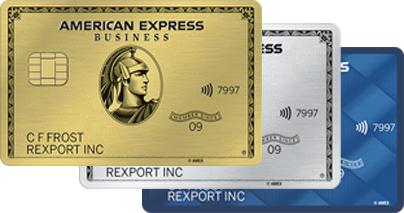
7 Best Practices for Companies Using a Corporate Credit Card
By Michael Grace | American Express® Freelance Contributor
5 Min Read | July 29, 2022
Summary
Decisions abound when issuing corporate credit cards. Do all employees get them or just a certain department? What will the spending limits be? Are there certain expenses the business will not cover? These are just some of the choices a business may face when developing its corporate credit card policy. Companies looking to develop an effective corporate card management strategy may wish to consider incorporating the following seven best practices.

1. Develop a Clear Company Credit Card Policy
As you develop your company’s corporate credit card policy, ensure guidelines are well-defined, transparent, and leave little doubt for employees. Effectively communicating the policy can help mitigate any confusion. And if employees know what they can and can’t spend on, a clear-cut policy may keep their spending in check. Any employee issued a corporate credit card should be able to recite policy rules – or at least know where to look or who to ask if questions arise.
2. Define Corporate Card Member Responsibilities
When it comes to using corporate credit cards, the distinction between business and personal spending should be clear. Flights and hotel stays may be business expenses, worthy of corporate credit card use. But what about an employee buying things they forgot to pack, such as a toothbrush and toothpaste or extra clothing? It’s wise to establish a corporate credit card policy that makes those types of distinctions up front.
It’s also a good idea to ensure that your expense reporting system provides a way to differentiate between the two, should a personal expense be recorded on the corporate card – whether by accident or by confusion.
3. Set Corporate Credit Card Spending Limits
Establishing limits on covered expenses can help businesses more effectively manage their expenses. By capping spending in certain categories, employees will know exactly how much they can or can’t spend, thus alleviating potential questions and back-and-forth emails that may occur when it’s time to fill out expense reports. Related, it’s a good idea to also make it clear what can be written off and what can’t. For example, if a traveling employee wants wine with dinner, they should know in advance whether the company will reimburse alcohol and how much – one glass of wine or a whole bottle – is covered. This helps employees to better align their wants with corporate policies.
Businesses may also want to consider using per diem limits on meals, hotel stays, and the like. Those limits should be flexible based on destination, as some cities are more expensive than others.
4. Require Purchase Approval When Necessary
Businesses may find it helpful to require preapproval for larger-cost items, such as long-distance airfare, longer-than-usual hotel stays, or an expensive client dinner. If the company has advance knowledge of an out-of-the-ordinary big expense, then managing the budget, as well as understanding when and why such expenses occurred, may be easier. Is the splurge part of an incentive-driven sales month or just a random Wednesday night out with the team? Did that luxurious dinner and the suite seats to the game land your company a big deal?
Establishing a preapproval system can also help set employee expectations – that large business expenses put on their corporate credit cards should be valid and justified.
5. Use Tracking Tools Provided by Your Corporate Credit Card Provider
Most credit card companies offer valuable analytics tools to help businesses monitor corporate credit card spending. They can offer useful insights about how, when, and why employees spend company money. For example, a company can track purchases by month and by year, sorted by department, employee, or vendor. In some cases, such tools may help a company determine ways to cut costs.
It also doesn’t hurt to know what’s going on each day, especially for startups, companies with limited capital, or simply moments when cash is tight. Daily monitoring may work as a deterrent to frivolous spending if employees know their boss is notified each time the corporate credit card is used.
6. Streamline Your Expense Reporting Process
The easier it is for employees to turn in receipts or file expense reports, the more likely they are to comply on time. Consider whether receipts are needed for every expense or whether the charge on the credit card statement is enough. If expense reports are required, clearly outline how detailed employees must be and how often they’re needed to help your business run most effectively. Answering these types of questions can help streamline the process.
What’s more, many corporate credit card companies offer useful expense management tools. In an increasingly mobile and on-the-go world, the ability to scan receipts from a mobile phone directly into expense reporting software can greatly streamline the process.
7. Read the Room
The leader of a business, department, or even just a team has many responsibilities. One of them is managing people, which at times can extend beyond pure business. For example, maybe you notice an employee seems to be having an off day or week – just not quite themselves, whether for a business or personal reason. To help lift their spirits, consider telling them to treat themselves to a nice lunch on their corporate credit card, for instance. Doing something to boost their mood may, in turn, lead to a productivity boost, as well as a more devoted and thankful employee who feels understood and cared about. Of course, it’s important to set spending limits and ensure you have the authority to permit such an expense.

You know what your business needs
Give it the spending power it's been looking for.






